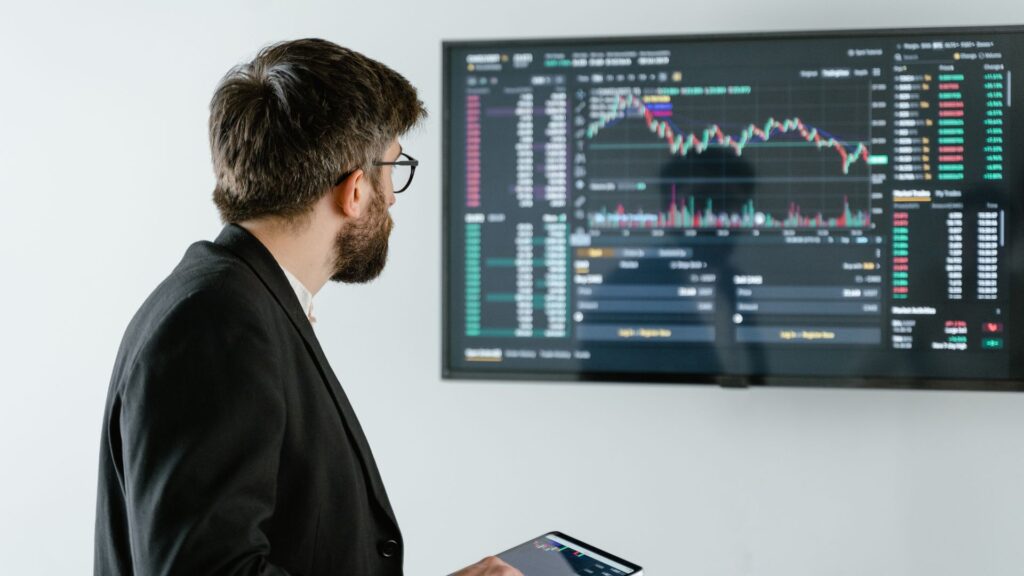Understanding margin and its related concepts is essential for effective risk management and trading success. This margin jargon cheat sheet is designed to clarify the fundamental terms associated with margin trading, providing you with a concise, easy-to-follow guide.
By laying out key concepts like leverage, margin calls, and equity, this article aims to enhance your trading knowledge and equip you with the tools needed to make informed decisions in the forex market.
In This Post
Margin Jargon Cheat Sheet
The Margin Jargon Cheat Sheet makes clear key concepts like leverage, margin calls, and stop-out levels, empowering you to take control of your trades with confidence.
Whether you’re a novice or a seasoned trader, this cheat sheet provides clear, actionable insights that transform complex margin jargon into practical knowledge, helping you safeguard your investments and optimize your trading strategies.
1. Margin
In forex trading, margin refers to the amount of capital required by a trader to open and maintain a position in the market. Unlike the full value of the trade, the margin is only a fraction of it, serving as a good-faith deposit that the broker holds to cover potential losses.
The concept of margin enables traders to leverage their positions, allowing them to control larger amounts of currency with a relatively small capital outlay.
When you enter a trade, your broker sets aside a portion of your account balance as margin. This margin acts as collateral to ensure that you can cover any losses incurred on the trade.
Example
Suppose you wish to trade a standard lot of EUR/USD, valued at $100,000. If your broker requires a margin of 1%, you’ll need to deposit $1,000 as margin to open the trade. This $1,000 is not a fee but rather a portion of your trading account balance that is set aside to cover potential losses.
2. Initial Margin
Initial margin, also known as deposit margin, is the specific amount of money you need to deposit with your broker to open a trading position. The initial margin acts as a security deposit, ensuring that you can meet the financial obligations of your trade.
The initial margin requirement depends on several factors, including the broker’s policies, the currency pair’s volatility, and the leverage ratio. Higher leverage allows you to open larger positions with a smaller initial margin, but it also increases your risk exposure.
Example
Let’s say you’re interested in opening a $10,000 position in the GBP/USD pair, and the broker’s margin requirement is 2%. In this case, the initial margin you need to deposit would be $200. This $200 ensures that you have sufficient funds to back your position and cover potential losses.
3. Maintenance Margin
Maintenance margin is the minimum account balance that a trader must maintain to keep their open positions active. If your account balance dips below the maintenance margin due to adverse price movements, you will receive a margin call from your broker. This margin call requires you to either deposit more funds into your account or close some of your positions to free up margin.
Example
Imagine you’ve opened a forex position that requires a maintenance margin of $500. Over time, the market moves against your position, and your account balance drops to $450.
At this point, your broker will issue a margin call, asking you to either deposit additional funds to bring the balance back above $500 or close the position to avoid further losses.
4. Margin Call
A margin call occurs when a trader’s account equity falls below the required maintenance margin level. This is a broker’s way of alerting you that your account no longer has enough funds to cover the potential losses of your open positions.
Failing to respond to a margin call can result in your broker automatically closing your positions to bring your account back within the required margin levels. This forced liquidation can occur at a loss, leaving you with significantly reduced capital.
Example
Suppose your account has $1,000 in equity, but due to a significant adverse movement in the market, the value of your positions drops, and your equity falls to $800, while your maintenance margin requirement is $1,000.
Your broker will issue a margin call, requiring you to either deposit additional funds or close positions. If you do not take action, the broker may automatically close your positions to bring your account equity back in line with the maintenance margin.
5. Free Margin
Free margin refers to the amount of money in your trading account that is not currently allocated to maintain open positions. It represents the available funds you can use to open new trades or to absorb potential losses from existing trades.
Example
If you have $2,000 in your trading account and $1,500 is being used as margin for your open trades, your free margin would be $500. This $500 is the amount available for you to open additional trades or to cover any margin calls.
6. Used Margin
Used margin is the portion of your account balance that is allocated to maintain your open positions. It represents the total amount of money tied up as margin for the trades you currently have open. The used margin ensures that you have enough funds to cover potential losses on those positions.
Example
If you have three open trades, each requiring $1,000 in margin, your total used margin would be $3,000. This amount is reserved from your account balance to support your active positions.

7. Leverage
Leverage is a financial tool that allows traders to control a larger position in the market with a smaller amount of capital.
It is expressed as a ratio, such as 100:1, which means that with $1, you can control $100 in the market. Leverage magnifies both potential gains and potential losses, making it a powerful but risky tool in forex trading.
Example
With a leverage ratio of 100:1, a deposit of $1,000 enables you to control a position worth $100,000 in the forex market. This increased control can amplify profits but also raises the risk of significant losses.
8. Equity
Equity represents the total value of your trading account, including both your cash balance and any unrealized profits or losses from your open positions.
Example
If you have $5,000 in your account and your open trades have generated a profit of $500, your total equity would be $5,500. This includes your initial balance plus any gains or losses from current positions.
9. Margin Level
Margin level is a percentage that indicates the relationship between your equity and used margin. A higher margin level suggests that you have more free margin available relative to your used margin, reducing the likelihood of a margin call.
Example
If your equity is $4,000 and your used margin is $1,000, your margin level would be 400%. This high margin level indicates that you have ample free margin to cover potential losses.
1o. Stop-Out Level
Stop-out level is the threshold at which your broker will automatically close some or all of your open positions to prevent further losses when your margin level falls below a critical point.
Example
If your broker’s stop-out level is set at 50% and your margin level drops to 45%, the broker may close one or more of your positions to bring the margin level back to a safer level. This automatic closure helps to avoid further depletion of your account balance.
Frequently Asked Questions
1. What is the difference between margin and leverage in forex trading?
Margin is the amount of money required to open and maintain a trading position, acting as a deposit held by the broker to cover potential losses.
Leverage, on the other hand, allows you to control a larger position with a smaller amount of capital. For example, with 100:1 leverage, a $1,000 deposit can control a $100,000 position. While margin is the amount set aside, leverage amplifies your ability to trade larger positions.
2. How do I calculate my free margin and why is it important?
Free margin is calculated by subtracting the used margin from your total equity. It represents the funds available for opening new trades or covering potential losses from existing positions.
For example, if you have $5,000 in equity and $3,000 is used as margin, your free margin is $2,000. Monitoring free margin is crucial as it helps you avoid margin calls and manage your trading capacity effectively.
3. What should I do if I receive a margin call from my broker?
Receiving a margin call means that your account equity has fallen below the required maintenance margin.
To address this, you should either deposit additional funds into your account or close some open positions to reduce the used margin.
Failing to act on a margin call can lead to the automatic closure of your positions by the broker. This can potentially resulting in significant losses.
Conclusion
Mastering margin-related terms is essential for every forex trader. Understanding how margin works and the risks involved will help you make informed decisions.
Use this cheat sheet as a quick reference guide to navigate the complexities of margin trading confidently. Whether you’re a beginner or an experienced trader, keeping these terms at your fingertips will enhance your trading strategy. It will help you manage risk more effectively.




